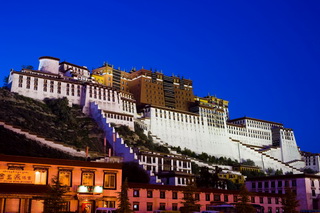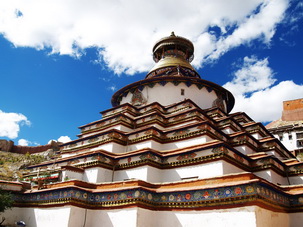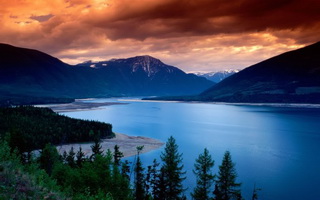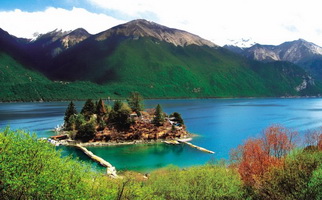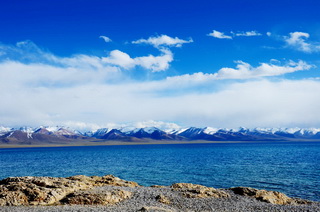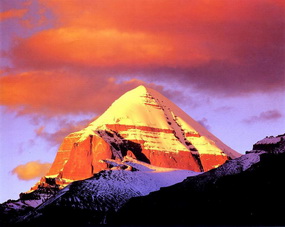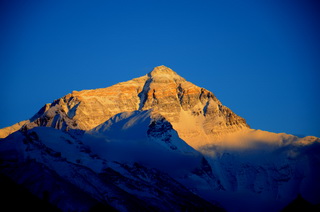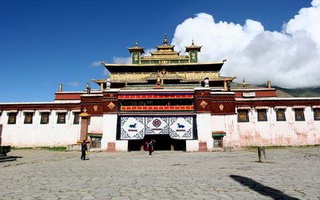
 China Tours
China Tours Tibet Tours
Tibet Tours China Theme Tours
China Theme Tours Off The Beaten Track
Off The Beaten Track Yangtze Cruises
Yangtze Cruises China Trip Planner
China Trip Planner Travel Agents
Travel Agents


We had a wonderful time in Tibet. We have learned a lot about this unique destination because of the wonderful guide Degyi who is so knowledge and always available towards our tours. We stayed at the Shangri-La Hotel Lhasa, and we would never imagine a Tibet travel could be so nice and amazing without the help of Degyi.
Also, thanks a lot to our Tibetan driver Mr.Wongdun for his safe driving and a good sense of service along the way.
We shall return Tibet in the near future!
P.B. and A. A - Europe
Tibet Travel
June 2018 (Private Tibet Journey from Kathmandu)

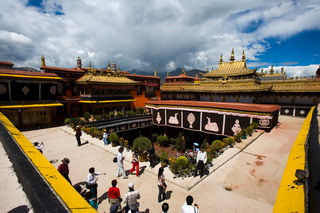
Land of Snows, the Roof of the World, is perhaps can not precisely describe what Tibet is. Shangri-La, maybe! Tibet is an amazing place that is the biggest, highest and the youngest plateau in the world. Tibet has some of the world's most breathtaking natural and culture sights, the Tibetan people are extremely hospitable who warmly invite you and welcome you.

Guide on Top Attractions in Lhasa,Tibet including Potala Palace, Jokhang Temple, Norbulingka Park, Drepung Monastery, Sera Monastery and Gandan Monastery etc.
Gyantse is the fourth largest city in Tibet (following after Lhasa, Shigatse and Chamdo) notable for the Kumbum Stupa of the Pelkhor Monastery. Gyantse has preserved much of its old-world atmosphere, and Tibetan rural life continues here, virtually unchanged, against a backdrop of magnificent 14th-15th century fortresses and temples. It is strategically located on the ancient trade routes from the Chumbi Valley, Yatung and Sikkim, which met here. From Gyantse, routes led to Shigatse downstream and also over the Karo La (Pass) to Central Tibet.
Chamdo, located in East Tibet, along the Sichuan/Yunnan-Tibet Highway, belongs to the traditional Kham Region, famous for its unique and fascinating Khampa culture. There are the Tibetan Buddhism and rich Khamba folk customs, such as the residential housing, the costumes, weddings, funerals, bite and sups, and folk arts. Chamdo had long been the hub for the ancient Tea and Horse Caravan Route. Most trade caravans departed from Yunnan and passed through Chamdo Region to Lhasa in the central areas.
Nyingtri (also Linzhi), means "Throne of the Sun" , is located in southwest Tibet borders traditional Kham region, where the Himalayas and the Nyainqentanglha Mountains extend from west to east, like two huge parallel dragons, to join the Hengduan Mountains in the east. Located at an average elevation of 3,100 meters (10,170 feet), it enjoys a moist and mild weather and a beautiful natural scene. Nicknamed as the "the Switzerland in the East", Nyingtri is a charming place with amazing natural scenery and intruding Tibetan Bon faith.
Located in the north of Tibet, Nagqu is a sparsely populated region with a huge quantity of protected wildlife, unspoiled grassland and Tibetan culture at its most rural. It is Tibet's largest prefecture covering over 450,000 square kilometers, but with less than 400,000 populations. Nagqu holds "Heavenly Lake" Nam Tso, Nyainqentanglha Mountains, and the snow-capped Dargo Mountain in the west and the Burgyi Mountain in the east, guarding the treasure land like two ferocious lions. Nagqu is a heaven for endemic botanical and wildlife discovery tours.
Known as the roof on the Roof of the World, Nagari, sits 4,500 meters (14,764 feet) above sea level, is located in the Northwestern part of the Tibet Plateau. It is dotted with lakes with a limited inhabitants and is a paradise for Wild Lives, such as wild yaks, Tibetan antelopes, and wild donkeys. Nagari is home to sacred Mount. Kailash and Lake Manasarovar. Making a pilgrimage to one of the most mystical and remote corner of the world, joining the crowds at holy Mt. Kailash for the Sage Dawa Festival, visiting sacred Lake Manasarovar, a body of turquoise water bordered by snowy peaks, tunneling through the mountain ruins of the ancient Guge Kingdom at Tsaparang, these can be your genuine once-in-a-lifetime experiences.
Used to be called Tsang by Tibetan, Shigatse covers an area of over 3,800 square kilometers (about 1490 square miles), this frontier city is the second largest in Tibet. It sits in the plain at the confluence of the Yarlong Tsangpo and Nyangchu Rivers, where Tibet's most fertile land is to be found. Shigatse is the traditional seat of the Panchen Lama, which is the cultural, economic and political center of Tsang. The city connects with three countries of Nepal, Bhutan and Sikkim in the south, Ngari in the west, Nagqu in the north, Lhasa and Shannan (Lokha) in the east.
Trandruk Monastery Tsetang, the capital of Tibet's Shanan Prefecture (Lhokha), is reputed as "the cradle of Tibetan Civilization", and birthplace of the Tibetan people. Tsetang is a small city at the foot of Gangpo Ri, a sacred mountain. For the Tibetan, Tsetang holds special significance. Tsetang boasts a combination of natural and cultural scenery. Famous sightseeing attractions include the mighty Samye Monastery, Yungbulakhang Castle and Trandruk Monastery etc.
China Trip Planner | Travel Agents | About Us | Why Us | Contact Us | How to Pay | How to Book - Terms & Conditions | Site Map
Copyright © 2010 - 2030 All Rights Reserved.


 0086-28-85711328
0086-28-85711328 0086-28-85546015
0086-28-85546015




